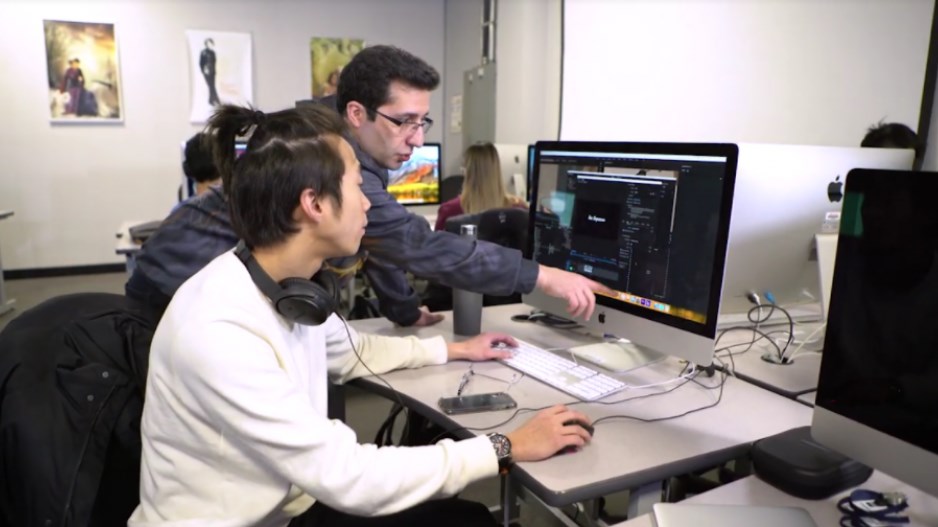While applying for summer jobs, BCIT School of Business + Media student Miria Huber came up against a barrage of rejections.
But Huber didn’t get discouraged. After all, in BCIT’s intensive, two-year Digital Design and Development program she was learning to problem-solve.
Huber scrutinized the application process and invented the ground-breaking software program Recruitable. Right now a landing page explains the app; visitors can leave their emails to be notified when it launches in the first week of January.
Huber recalls her aha moment. While a job recruiter messaged her with advice, Huber was thinking bigger: “I decided to look at the method companies were using to narrow down, say, 300 applicants to the five they interview in person.”
She realized the era of people sorting through stacks of résumés was long gone —replaced by software, like Applicant Tracking System (ATS). “With ATS, even though you may be the best applicant, if you aren’t using the keywords or the format ATS is looking for, it will lower your score,” Huber explains. “You won’t be among those final five.”
Around the same time, Ramin Shadmehr, Program Head of Digital Design and Development and Technical Arts, issued his annual Canada Day challenge to students: Devise a digital application that contributes to and benefits your community. The deadline: September.
Huber knew she’d found her idea. “I decided to create the reverse of the ATS system: a program for applicants. The program would guide the user through each section of creating their résumé — accessing the application, loading the job description and then writing, reviewing and designing it.”
Digital Design and Development students each had two minutes to present their idea to faculty and other students. Out of 75 ideas, Huber’s topped the votes.
As Shadmehr explains: “Miria’s assignment put her in the real world of detecting a problem and providing a solution in the form of a digital platform.”
Digital Design and Development’s annual challenge reflects the intrinsic goal of every School of Business + Media program: to prepare students for actual industry practice.
“We’re not training graduates, we’re training employees,” says Shadmehr. “If your idea is selected, you don’t stop there. You see it through. You headhunt your team from classmates, then together use what you’re all learning to build the product.”
For example, Huber and her team used skills they learned in courses like web development, Photoshop, interface and user experience design, as well as business communications, to bring their project to reality.
“We created an algorithm that uses artificial intelligence, reviews your résumé and shows what is missing,” says Huber. “Recruitable gives the user sentence samples, shows how to properly write a summary, and makes sure they are using the keywords to be relevant for a specific position.”
It results in an easy-to-use interface that gives people the option of either providing a design or creating their own through Word or other means.
Typically a job seeker prepares 100 applications, and spends at least three hours on each one. That’s time that could be more profitably used, Huber says. “With our program, the user will have a master resumé that they can update and adjust as necessary.”
And, in delivering more accurate profiles, Recruitable can save employers the common misstep of not getting a hire right the first time. A boon to applicants — and to industry.
This win-win is at the heart of BCIT’s philosophy and practice, says Shadmehr.
“On day one of the program I tell students, ‘The most important stakeholder in their education is industry that is going to hire you. By coming out of our program career-ready, you will make industry happy—and you’ll be happy because you’re going to be hired.’ We’re here to make that happen,” he adds. “Many of our faculty work in industry, are current experts, bringing what they do at work into the classroom, ensuring students are receiving the latest, most up-to-date information.”
Shadmehr and Huber concur that the program is demanding. But that toughness is what builds confidence, says Huber. She remembers having doubts about taking Recruitable further and turning it into a business.
“The unknown can be scary. It was tempting to take the easy way and go work for someone else. But Ramin [Shadmehr], Henry Leung and other instructors encouraged me to look for the funding to grow Recruitable,” Huber reflects. “Too often someone has an idea but doesn’t pursue the dream. Thanks to them, I did.”
Find information about the Digital Design and Development program, or learn more about BCIT School of Business + Media programs by attending an online info session.




